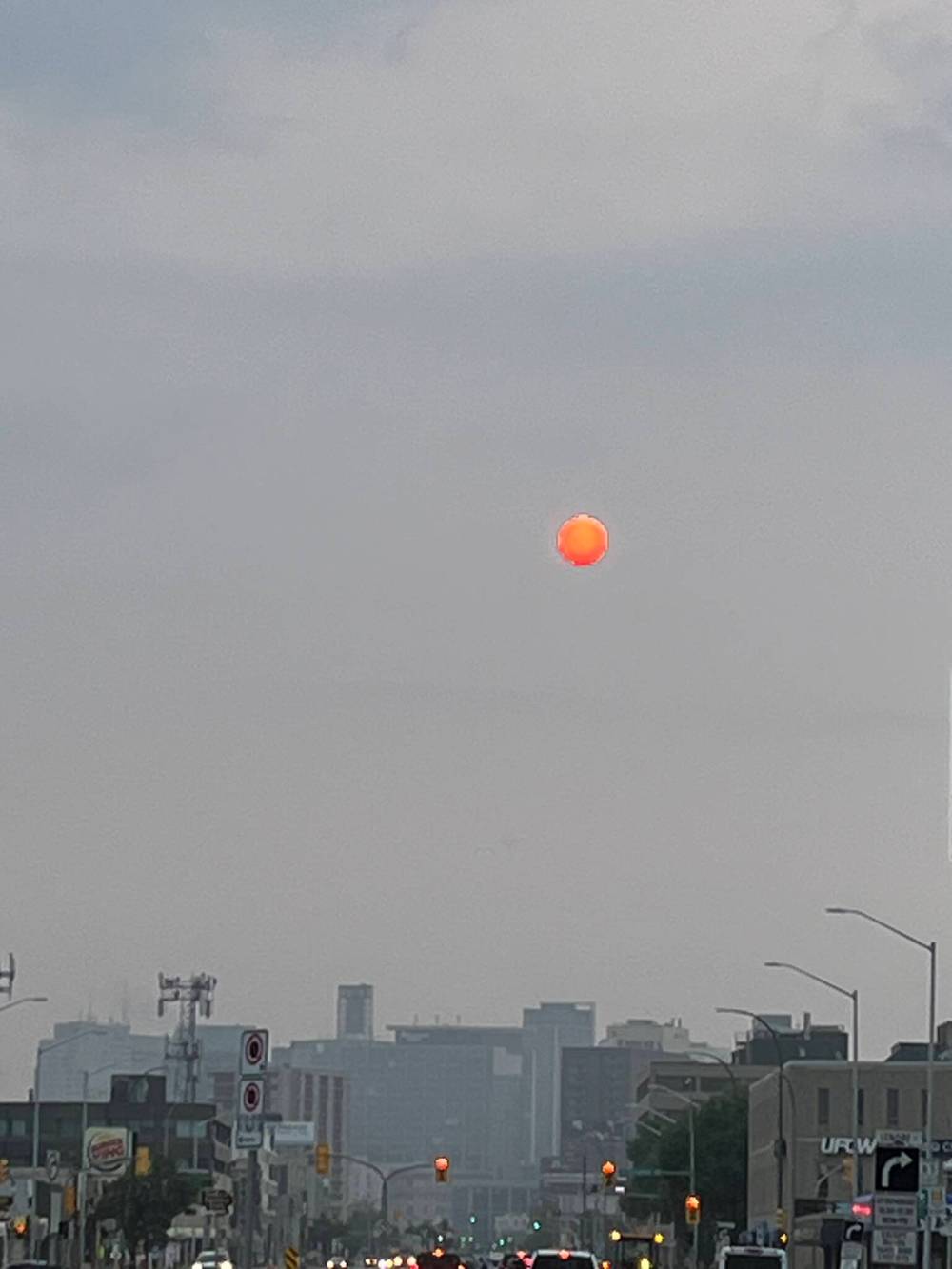Forest fires and the future
Advertisement
Read this article for free:
or
Already have an account? Log in here »
To continue reading, please subscribe:
Monthly Digital Subscription
$0 for the first 4 weeks*
- Enjoy unlimited reading on winnipegfreepress.com
- Read the E-Edition, our digital replica newspaper
- Access News Break, our award-winning app
- Play interactive puzzles
*No charge for 4 weeks then price increases to the regular rate of $19.00 plus GST every four weeks. Offer available to new and qualified returning subscribers only. Cancel any time.
Monthly Digital Subscription
$4.75/week*
- Enjoy unlimited reading on winnipegfreepress.com
- Read the E-Edition, our digital replica newspaper
- Access News Break, our award-winning app
- Play interactive puzzles
*Billed as $19 plus GST every four weeks. Cancel any time.
To continue reading, please subscribe:
Add Free Press access to your Brandon Sun subscription for only an additional
$1 for the first 4 weeks*
*Your next subscription payment will increase by $1.00 and you will be charged $16.99 plus GST for four weeks. After four weeks, your payment will increase to $23.99 plus GST every four weeks.
Read unlimited articles for free today:
or
Already have an account? Log in here »
Hey there, time traveller!
This article was published 25/07/2024 (514 days ago), so information in it may no longer be current.
You couldn’t smell it in Winnipeg, but it was there.
High enough up that, while it may have been playing a role in the day-to-day temperatures, it wasn’t enough of a hazard to find its way into the weather forecast. No health warnings about particulates, no suggestions that those with lung disorders should stay inside.
The biggest hint was in the evenings and the early mornings, when the sunlight, and sometimes the sun itself, took on an eerie orange tint.

Russell Wangersky/Free Press
The sun is seen forest fire smoke above Portage Avenue on July 22.
Smoke. Forest fire smoke, to be precise.
Enough smoke that sometimes shadows from the partially blocked sunlight were cast across sidewalks in an unearthly pale blue. Not enough — or not near enough, right now — that the air itself was filled with the smell of smoke.
Wednesday morning, the BC Wildfire Service logged 107 new fires starting over a 24-hour period. Firesmoke.ca showed 284 significant forest fires in Western Canada, all of them adding to a blanket of smoke.
To the north of us, the forest fire smoke plume in the atmosphere stretched from Alaska to Quebec — to the south, from just below Portland, Ore., to Cleveland, Ohio.
We hear about the large fires or the significant ones — the fire that has caused the evacuation of the town of Jasper, Alta. and Jasper National Park, for example, or the Antler Creek fire that’s now threatening the reconstructed B.C. gold rush town of Barkerville. But there are scores of other fires, some burning with limited or no efforts to even fight them.
It is a now-familiar summer story — the combination of exceptionally dry forestlands (this year in B.C. and Alberta) and passing thunderstorms with lightning strikes (in B.C., 38,000 lightning strikes on Monday alone). Throw into that other causes, ranging from electrical wires to accidental blazes to careless campers or homeowners, and you have a mix for large, fast-moving fires that are difficult to control.
Wildfire tracking data from the U.S. Environmental Protection Agency through 2024 offer a good thumbnail explanation of why forest fires are growing in number and intensity. “Multiple studies have found that climate change has already led to an increase in wildfire season length, wildfire frequency, and burned area. The wildfire season has lengthened in many areas due to factors including warmer springs, longer summer dry seasons, and drier soils and vegetation. Similarly, climate change threatens to increase the frequency, extent, and severity of fires through increased temperatures and drought.”
The question, then, becomes how to address the fires, which, in addition to adding costs to every Canadian as insurance rates rise to cover personal losses due to fires reaching homes, actually release significant amounts of carbon into the atmosphere.
The sad part is that the only option left at this point is to look at ways to mitigate losses.
And some of that mitigation may look a lot like the kinds of things the federal government is considering for a different kind of natural disaster.
As private insurers and mortgagers have second thoughts about insuring homes in areas with increased threat from flooding, the federal government is looking at becoming an insurer of last resort. But there are strings attached: homeowners who are flooded may have to agree to be moved from areas that flood frequently, or may be held to more stringent building standards.
It’s not unlikely that similar changes will be required in areas with significant wildland fire risk.
For some, it may be changes in requirements for building materials and landscaping, leaning towards, for example, non-combustible roofing materials and landscaping that provides a clear buffer between wild lands and homes.
For others, it may well be that insurance may simply become unavailable.
It’s a new world. Not necessarily a nice one.




